Text
y’all ever just watch polyglot videos for motivation, but then spend all your time doing that so you don’t actually study any actual languages??? because same.
785 notes
·
View notes
Photo
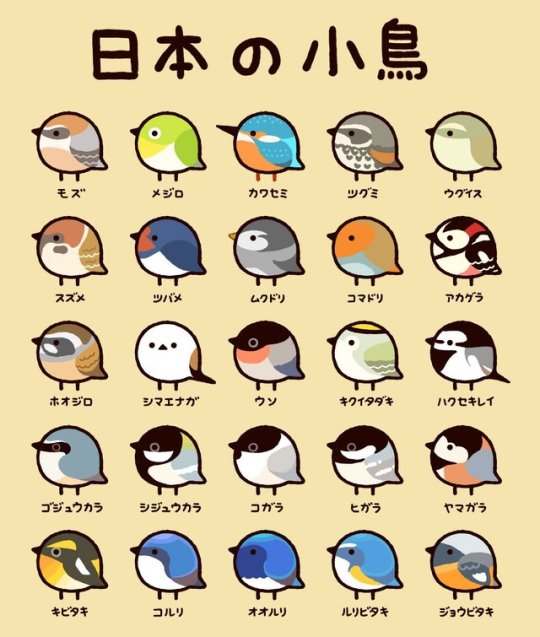





Nihon no kotori (Japanese small birds), cute helpful chart by @T_marohiko listing the following species:
First row - 百舌 mozu (bull-headed shrike) / 目黒 meguro (bonin white-eye) / 川蝉 kawasemi (kingfisher) / ツグミ tsugumi (dusky thrush) / 鶯 uguisu (japanese bush warbler)
Second row - 雀 suzume (sparrow) / 燕 tsubame (swallow) / 椋鳥 mukudori (grey starling) / 駒鳥 komadori (japanese robin) / 赤啄木鳥 akagera (great spotted woodpecker)
Third Row - 頬白 hoojiro (meadow bunting) / シマエナガ shimaenaga (silver-throated dasher) / 鷽 uso (japanese bullfinch) / 菊戴 kikuitadaki (goldcrest) / 白鶺鴒 hakusekirei (black-backed wagtail)
Fourth row - 五十雀 gojuukara (eurasian nuthatch) / 四十雀 shijuukara (japanese tit) / 小雀 kogara (willow tit) / 日雀 higara (coal tit) / 山雀 yamagara (varied tit)
Fifth row - 黄鶲 kibitaki (narcissus flycatcher) / 小瑠璃 koruri (siberian blue robin) / 大瑠璃 ooruri (blue-and-white flycatcher) / 瑠璃鶲 ruribitaki (red-flanked bluetail) / 尉鶲 joubitaki (daurian redstart)
5K notes
·
View notes
Text
Korean Slang
헐 - (something surprising or shocking)
대박! - Awesome!
배째! - Sue me!
행쇼 - Lets be happy
당근이지 - of course
왜 사니? - Why are you alive?
낚였어 / 낚았지? - You got me/ I got you, didn’t I?
너도 내 입장이 되어봐 - Put yourself in my shoes
이 짓이 지겨워 죽겠어 - This sucks/ I’m sick and tired of this
친구 좋다는 게 뭐야? - What are friends for?
오해 하지 마세요 - Don’t get me wrong
니 맘대로 하세요 - Suit yourself
아직 옛날 실력 안 죽었어 - I’ve still got it
이 엄살쟁이 - You big baby
내 모든 걸 걸었어 - I put everything into it
강심장이군 - His heart is made out of stone
오늘은 내가 쏜다 - Today, it’s on me
맞장구 좀 쳐 주라 - Back me up
당당하게 살아라 - Stand tall
네가 보고싶어 죽겠어 - I’m dying to see you
혈통 문제로군 - It runs in the family
A&R

13K notes
·
View notes
Text
Free Online Language Courses

Here is a masterpost of MOOCs (massive open online courses) that are available, archived, or starting soon. I think they will help those that like to learn with a teacher or with videos. You can always check the audit course or no certificate option so that you can learn for free.
American Sign Language
ASL University
Arabic
Arabic for Global Exchange (in the drop down menu)
Arabic Without Walls
Intro to Arabic
Madinah Arabic
Moroccan Arabic
Catalan Sign Language
Intro to Catalan Sign Language
Chinese
Beginner
Basic Chinese
Basic Chinese I. II, III, IV , V
Basic Mandarin Chinese I & II
Beginner’s Chinese
Chinese for Beginners
Chinese Characters
Chinese for HSK 1
First Year Chinese I & II
HSK Level 1
Mandarin Chinese I
Mandarin Chinese for Business
More Chinese for Beginners
Start Talking Mandarin Chinese
UT Gateway to Chinese
Chino Básico (Taught in Spanish)
Intermediate
Chinese Stories
Intermediate Business Chinese
Intermediate Chinese Grammar
Dutch
Introduction to Dutch
English
Online Courses here
Resources Here
Faroese
Faroese Course
Finnish
A Taste of Finnish
Basic Finnish
Finnish for Immigrants
Finnish for Medical Professionals
French
Beginner
AP French Language and Culture
Basic French Skills
Beginner’s French: Food & Drink
Diploma in French
Elementary French I & II
Français Interactif
French in Action
French for Beginners
French Language Studies I, II, III
French:Ouverture
Intermediate & Advanced
French: Le Quatorze Juillet
Passe Partout
La Cité des Sciences et de Industrie
Frisian
Introduction to Frisian (Taught in English)
Introduction to Frisian (Taught in Dutch)
German
Beginner
Beginner’s German: Food & Drink
Conversational German I, II, III, IV
Deutsch im Blick
Diploma in German
Rundblick-Beginner’s German
Advanced
German:Regionen Traditionen und Geschichte
Landschaftliche Vielfalt
Hebrew
Biblical Hebrew
Know the Hebrew Alphabet
Teach Me Hebrew
Hindi
A Door into Hindi
Business Hindi
Virtual Hindi
Icelandic
Icelandic 1-5
Indonesian
Learn Indonesian
Irish
Introduction to Irish
Italian
Beginner
Beginner’s Italian: Food & Drink
Beginner’s Italian I
Introduction to Italian
Italian for Beginners 1 , 2, 3 , 4 , 5, 6
Intermediate & Advaned
Intermediate Italian I
Advanced Italian I
La Commedia di Dante
Japanese
Genki
Japanese JOSHU
Japanese Pronunciation
Sing and Learn Japanese
Tufs JpLang
Kazakh
A1-B2 Kazakh (Taught in Russian)
Korean
Beginner
First Step Korean
How to Study Korean
Learn to Speak Korean
Pathway to Spoken Korean
Intermediate
Intermediate Korean
Nepali
Beginner’s Conversation and Grammar
Norwegian
Introduction to Norwegian
Norwegian on the Web
Portuguese
Curso de Português para Estrangeiros
Pluralidades em Português Brasileiro
Russian
Beginner
Easy Accelerated Learning for Russian
Advanced
Reading Master and Margarita
Russian as an Instrument of Communication
Siberia: Russian for Foreigners
Spanish
Beginner
AP Spanish Language & Culture
Basic Spanish for English Speakers
Beginner’s Spanish:Food & Drink
Fastbreak Spanish
Introduction to Spanish
Restaurants and Dining Out
Spanish for Beginners
Spanish for Beginners 1, 2, 3, 4, 5, 6
Spanish Vocabulary
Intermediate
Spanish:Ciudades con Historia
Spanish:Espacios Públicos
Advanced
Corrección, Estilo y Variaciones
Leer a Macondo
Spanish:Con Mis Propias Manos
Spanish: Perspectivas Porteñas
Swedish
Intro to Swedish
Swedish Made Easy 1, 2, & 3
Ukrainian
Read Ukrainian
Ukrainian Language for Beginners
Welsh
Beginner’s Welsh
Discovering Wales
Multiple Languages
Ancient Languages
More Language Learning Resources & Websites!
Last updated: March 1, 2017
214K notes
·
View notes
Text
Japanese conversation resources for beginners
Hey guys! I found some good conversation and practice videos, it's for people who are just starting learning Japanese, I personally find it very helpful so I can get used to talking in Japanese .
▪️Here's a playlist with multiple videos that includes words necessary for traveling and just a bunch of basic and necessary phrases and words.
▪️And this is the one I'm currently using Slow and easy Japanese conversation.
14 notes
·
View notes
Text
Hiragana and Katakana tips for Beginners
A little snapshot of my own hiragana and katakana characters.

Many beginners encounter problems while learning Japanese writing systems: hiragana and katakana. I decided to take a look at the most common, in my opinion, mistakes made by learners.
Remember, the stroke order isn’t there to make your life harder (although it does most of the time). It is really important to write the characters the certain way as any other way makes them look slightly or completely different.
Before I begin I would like to explain the particular way I write き・さ・ふ・そ.
There are, as far as I know, two different ways to write a character. The way I write them is more of a caligraphic approach (the second line). Mostly, learners tend to choose the first approach.
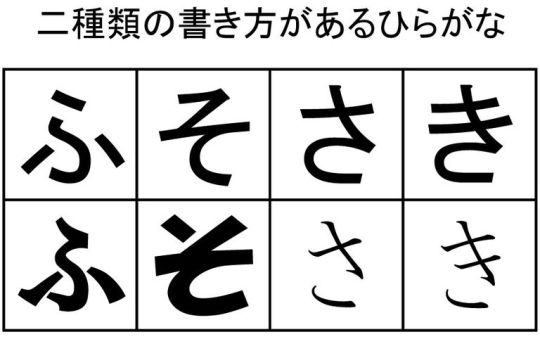
I switched the way to write this characters as ふ is faster to write (three strokes instead of four). そ・さ・き plainly look better to me.
Getting to the gist of the post now - common mistakes made by beginners.
1. Mirroring
Even though hiragana is more complicated (more strokes and more curvy ones), the characters are fairly more distinguishable. Learners might however make mistakes by mirroring the characters (き・ち・さ・く are the trickiest ones among them).
2. Confusing hiragana り and katakana リ

The hiragana ri り is shown at the left side. The first stroke should go down and then a little up (shown at the bottom). Because of this ri り could be written in hiragana as the 2nd and 3rd example on the left side show.
The katakana ri リ however doesn’t have a pointed end in the first stroke (as shown on the right).
While writing a word in hiragana or katakana, you must make sure you write the correct ‘ri’. You musn’t write a word in one system and the throw a character from the other system!
e.g. Writing リんご ( リんご ) instead of りんご
3. Mixing up similar characters
I think this mistake applies more to katakana. The most common mistake is writting shi シ insted of tsu ツ and n ン instead of so ソ.

Confusing so ソ and n ン
You should start by writing the small line first. Then the longer one. The longer line in so ソ should be pointing high, while the one in ン should be lower.
Many Japanese people tend to make n ン really flat and so ソ higher (like me in the first picture).
Notice that the longer line is written from different sides!

Confusing shi シ and tsu ツ
The same goes for this characters. Shi シ is n ン with two small lines, while tsuツ is so ソ with two small lines.

Confusing ko コ (the first one) and ユ (the second one)

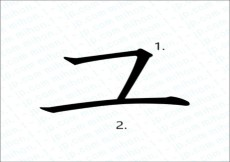
Ko コ and yu ユ have similar writing patterns. The last stroke in yu ユ should be long and going past the first one.
Confusing ku ク(the first one) and ke ケ (the second one)

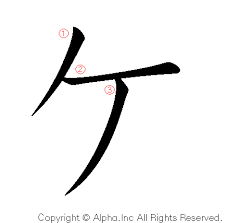
Ku ク consists of two strokes, while ke ケ of three. The first and second line in ke ケ aren’t connected with their ends. The same goes for the second and third line.
Confusing wa わ and re れ (and ne ね)
Easily mistaken characters in hiragana.
From left to right: ne, re, wa

Plainly, wa わ should have a round stroke (like a belly) and re れ a little pointed end (like a leg). Ne ね has a little circle inside.
Notice that all three of them consist only of two strokes!
4. Ro ロ and its stroke order
Ro ロ has the same stroke order as the kanji for mouth 口. Don’t write it like a plain square. It has three strokes, not four! It looks different than normal when written using four or even two strokes.
Notice that the kanji looks bigger than ro ロ in normal digital font.
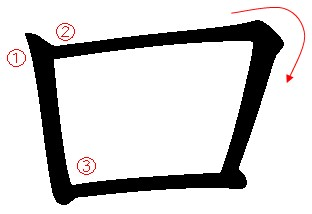
Hope I cleared up some things for you. If you have some questions regarding Japanese writing feel free to ask me!
以上。
2K notes
·
View notes
Text
Beginner Japanese Resources

I’ve seen quite a lot of these going around, and have definitely taken quite a few pages out of their books, but I thought I had some bookmarks I’d like everyone to know more about, even if they already did. ^^ If you think something is wrong, or know something is wrong, then please tell me!
g r a m m a r
Tae Kim’s Guide to Japanese Grammar (easy acquaintance with grammar, but not much in-depth)
IMABI (best free grammar resource but too much information for beginners, or so it’s said. still very helpful.)
Tim’s Takamatsu/ Tim Sensei’s Corner (also good. i heard of someone who printed out the older website and got fluent in Japanese with this, so it’s probably worth checking out)
Dictionaries of Japanese Grammar (hands down the best grammar resource, bit pricey or you could just download these PDFs).
Bunpro (good for interactive grammar studies, free until may 10 and there’s a one month free trial for subscription after that)
g r a m m a r / b l o g s
Japanese Ammo (native speaker and tutor’s blog, she also has a Youtube channel here)
Maggie-Sensei (grammar articles are a bit mismatched but good for little references)
Tofugu (probably the best culture and resources blog I’ve come across. a must.)
Romy-sensei (Japanese teacher, blog is VERY helpful)
DJT Guide (for a beginner outlook on how to start and where, named because of the daily japanese thread that I don’t have too much information on but it’s a daily thread where people learning japanese shared resources/ progress/ motivational whatevers)
i n t e r a c t i v e l e a r n i n g
Delvin Language (shows clips and asks you to identify what’s spoken. Very good for listening and you can slow them down, though use that sparingly. kinda spammy tho.)
Japanese Class (found this a few years ago, but it’s a gamified site that helps you learn vocabulary with regular exposure. recommended.)
Japanese in Anime and Manga (for fellow otakus. a bit hard for me to navigate, but it’s along a similar vein as the above site. offered in spanish, chinese, korean and french, besides english.)
Erin’s Challenge (recommended for upper beginners, or lower intermediates, but there’s a lot to do now as well! very good for listening and reading- with transcripts and subtitles- in the form of a school life role-play. offered in quite a few other languages.)
Duolingo (not a lot of information, nor is it very in-depth. good for dabbling in, maybe. try the website, not the app, if you really want to use it.)
LingoDeer (BEST app for learning the language. You could do a lot on it alone, and it can probably take you up to a little above N5, but don’t keep using it standalone for long! also offers chinese, korean and now vietnamese!)
t e x t b o o k s
TextFugu (tofugu’s online textbook, made specifically for self-study, though it works good in conjunction with classes and tuition)
Genki (widely used, most recommended by people)
Minna no Nihongo (also very popular. some consider it better than genki.)
Japanese for Busy People (especially if you’re a little short on time)
Japanese for Everyone (generally good reviews, with a lot of vocabulary - an estimated 2500 maybe? convert djvu to pdf to use.)
k a n j i (course books)
Kodansha Kanji Learner’s Course aka KKLC (a kanji learning course with vocabulary in it.)
Remembering the Kanji (aka the acclaimed ‘Japanese learner’s beginning holy grail’. but it totally depends upon what you’d prefer tbh. can make you recognise kanji and what they could stand for, but that’s about it.)
Kanji Damage (aka remember 1700 Kanji with offensive yo mama jokes. ridiculous? hilariously, it does work for some.)
WaniKani (people swear by this. you can try out the first three levels to see the magic, even if you don’t think it’s your style.)
l i s t e n i n g
mykikitori (for Genki 1 apparently)
Japanese Pod 101 (a good online course in itself, but the podcasts are the most helpful of the lot. @lovelybluepanda has made them available here.)
o t h e r s
DJT Resources (sub-link of DJT Guide but probably has all the Japanese resources you could ever want!)
Nihongo e Na (more resources, probably worth checking out)
Nihongo Resources (along a similar vein with the purpose in its name)
Jakka (the site is entirely in Japanese, but it has kanji for grade school, broken up appropriately)
Happy Lilac (kind of the same as above with kanji stroke order practice material, meant for Japanese children)
This may be repeated, because similar, if not the exact same, resources in DJT are categorised neatly here. @lovelybluepanda again.
check more masterposts, some of which have been compiled here by @languagesandshootingstars
日本語の森 (Nihongo no Mori) (Good Youtube videos for beginners and advanced learners alike! They even have their lessons separated by JLPT levels!)
While that’s it for all the Japanese resources I feel do not go around a lot now, I did compile some points Japanese beginners might be doubtful in and what I had found from my own research.
Genki or Minna no Nihongo?
Minna no Nihongo has more vocabulary (2100-2200 for 初級 levels i.e. the beginner books) while Genki boasts a little lesser (1700 for genki 1+2). Minna no Nihongo has allegedly more grammar coverage ( 〜ように、〜ために- used in native speech). However, the book is entirely in Japanese (there is a separate book for English explanations) and there is a separate book for Kanji too. The Answer Key is at the back of the book, unlike Genki which has a separate Answer Key.
Genki is said to be more beginner-friendly than Minna no Nihongo, but if you put your mind to it, you can do either tbh. Just choose any book and stick with it!
** If you’re planning to study in Japan anytime, remember that Japanese teachers usually use Minna no Nihongo. But better do your research as well.
Kanji?
Everyone can put in all the work they like in Kanji, but at the end of the day, Kanji is not the only thing about Japanese. You can totally use Anki or Quizlet or Memrise to drill it in, maybe even make your own flashcards and put in extra work! But to really get fluent in the language, talking to native speakers (helpful guide by @jibunstudies) is very important. Even if you don’t fully understand what they’re saying, you acquire more vocabulary and will get the nuance of basic sentences! And you get friends too, if you’re lucky!
Just for reference and no pressure, here’s the general requirement to pass JLPT levels, if you’re ever planning to take them!
Level Kanji Vocabulary Listening Hours of Study N5 ~100 ~800 Beginner 150 (estimated) N4 ~300 ~1,500 Basic 300 (estimated) N3 ~650 ~3,750 Lower Intermediate 450 (estimated) N2 ~1000 ~6,000 Intermediate 600 (estimated) N1 ~2000 ~10,000 Advanced 900 (estimated)
(… yeah, that looks way better on a computer ok.) Remember, estimated doesn’t mean it will take you that much time exactly. Everyone learns differently! And ‘talent’ can be overcome by enough hard work so ファイト!
頑張れ !
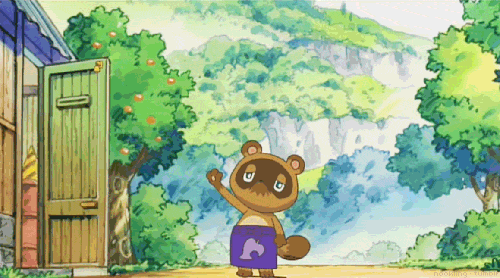
7K notes
·
View notes
Text
Tips when starting learning Japanese
▪️Learn the stroke order
Why is it important? In general stroke order is important because the hand written characters may look similar If written just randomly, the stroke order makes each character recognizable.
▪️ Print worksheets to practice Hiragana/Katakana
Personally I find it better to have physical material to study from. Also there are many free practice worksheets online.
This is the one I used
It contains hiragana and katakana practice+ a little quiz after each 5 characters, which is good practical practice for what you've already learnt. It includes notes on some particles and and also notes on certain confusing characters.
▪️Download a dictionary
It's vital for when you need to find a word. The best one is Takoboto.
You can search in English, Hiragana/Katakana or Kanji; including stroke orders of the Kanji.
▪️Apps are your friends
It's a life saver honestly, and is very convenient when I want to revise on the way to school.
Recommended apps:-
Hiragana pro
Katakana pro
Kana Dojo
Rosetta stone
JA Sensei
Busuu
Bunpo (Grammar)
Tangoristo which is similar to News Web Easy
▪️Surround yourself with the culture
To get used to the language try surrounding yourself with whatever you like whether it's music, anime, dramas, youtubers, visiting museums, listening to podcasts.
I hope this helps! Good luck!

18 notes
·
View notes
Text

My first post on this studyblr (*´∇`*) i’ve been wanting to make one for a while but since i’m taking japanese classes this year i think this is a good way to motivate myself!!
i had my second week of classes last friday and got my first thing of homework :D (the first day was mainly orientation) we started practicing hiragana :)
#studyblr#study blr#japanese#japanese studyblr#japanese studying#studying#language studyblr#language studying#japanese study#language study
4 notes
·
View notes





